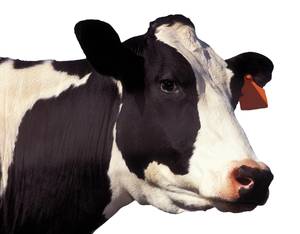Communication is the key to food crises
"The latest food crises have shown that citizens do not understand or believe in the communication that is carried out." These words are by José Luis Anda, Deputy Minister of Agriculture and Rural Development, who announced at the opening of the congress on Food Sociology held in Vitoria in July.
In fact, food security was not discussed at the congress, but the Anda conference focused on food security and alert communication. Therefore, its manifestations can be considered as indicators of the importance of the subject.
In fact, the German authorities and health officials have received severe criticism for the management of the alert caused by the enterohemorrhagic variant of the bacterium Escherichia coli. Specialist scientific journalist Xavier Pujol, for example, has defined with the term "chaotic" the protocol used by health officials to communicate the appearance and communication addressed to society.
As Pujol wrote in his blog Política Científica, the work done by scientists has been "excellent", since the infectious agent (bacteria) was immediately identified. However, the transmission chain investigation was not satisfactory at all. Therefore, he concluded that "it is necessary to review and strengthen the traceability system". However, it has made the hardest criticism of communication: "they have been too agile, careless, and over and over again."
Aside from the German crisis, at the same time, other news in our environment raised concerns among consumers, albeit at another level. In fact, early summer it was reported that consumption of blue fish can pose a health risk due to its mercury content. Although this type of fish was a good time to eat, many consumers discarded it, frightened by media headlines.
Risk not alert
In this context, food security experts consider it important to differentiate well what the alert is and what danger, since the protocols and guidelines to follow would not be the same in both cases. And the influence that can have one and another situation in society is not the same, nor the behavior of consumers.
This is the opinion of Isabel Martínez, director of the Basque Foundation for Food Security, Elika. The case of enterohemorrhagic E.coli is an alert and that of blue fish a danger.
"That is, in one we have a harmful agent and those responsible must make decisions to protect consumers. On the contrary, the mercury contained in some blue fish can be dangerous, but only for a group of the population and if the mercury concentration is very high, not always. Therefore, in these cases, those responsible must inform consumers so that they themselves are able to act wisely," explained Martínez.
However, for this to be so, the information must be clear and easily understandable and, according to Martínez, in the case of the mercury of blue fish it was not like this: "There was a disproportionate alarm. In order for this not to happen, it is necessary to design an appropriate communication strategy, and it is not enough to report it in case of danger, the information must be transmitted continuously."
Communication keys
Even recognizing that food information must be continuous, in case of alert it is essential to react quickly. Martínez, however, gives as much importance to coordination as to the speed in the adoption of measures and communication: "Improvisation must be avoided."
Thus, the responsible organizations have prepared the protocols with the main objective of avoiding the introduction of dangerous products in the food chain. In addition, protocols should ensure that direct and complete information is provided to all agents, such as producers, consumers and authorities. Success in this communication is fundamental.
In fact, not all of that is new. Following the crisis caused by acrylamide in certain foods in 2003, EUFIC, the European Food Information Council, published a report that collected the basic lessons for communication. These basic lessons were, respectively, to know your audience; to prepare the appropriate message; not to exaggerate the risks or the facts; not to confuse too many scientific bodies; to use proactive communication (transparency); to keep in mind that it is not always useful to give all the details; not to cite to accompany the media; to use reliable sources; and to prevent a communication vacuum from occurring.

Now, in the report issued by the same institution in relation to the German crisis, approximately the same points are mentioned. The only remarkable novelty is that related to social networks. In addition to traditional media, EUFIC believes that social media must be taken into account.
In the communication, Martínez warns of the existence of factors such as the risk level, the affected area (limited or extended), the season of the year (since some foods are seasonal), the foreseeable evolution of the outbreak and the crossed effects (age, health status, weather...).
"And there's more. Depending on all of them, communication will be in one way or another and will be addressed to one or the other. Of course, ambiguity must always be ruled out; the message must be clear, it must not allow incorrect understanding. That's essential for people to get the message right and know what to do."
Also consider it urgent to avoid noise: "the dissemination of information interested in favor or against a particular party must be avoided." Along with this, he believes that contradictory messages must also be discarded, "for example, one cannot say that there is no danger and, in any case, it would be in the long term, because that generates restlessness and can cause anxiety in many consumers." Finally, messages that say nothing are also reprehensible: "communication must inform, but it is useless."
For example, in the German case, Martínez believes that many of the above criteria were not taken into account: "From the beginning there were gaps in planning and coordination. In addition, suspicions were proven and many contradictory information was published. Therefore, a disproportionate alert arose and, worse still, consumers did not feel protected. It is not surprising, therefore, that now there is suspicion, both with food and with the authorities and responsible."
Previous prevention
In any case, Martínez highlights the existence of preventive measures prior to alert situations. "Prevention policies are fundamental. However, people should know that zero risk is impossible."
One of the most valuable tools for prevention is risk analysis. Following the crisis of mad cows, the European Union produced the White Paper on food security, from which those responsible for each territory established ways for risk analysis. Scientific committees or expert groups were established for this purpose.
These committees are independent and have as their mission to analyze all information about food and publish a report with the probability and severity of a risk.
Risk management
Therefore, administrations rely on scientific reports to design food security policies. However, Martínez clarifies that administrations also take into account other factors: social, economic, ethical, clinical, legal, political... "That is, risk management is carried out by administrations. Considering that there is no zero risk, they determine the risk assumed by society and calculate the cost of the control measures necessary to make such risk acceptable. This cost is compared to the benefits that the measures would report to society and finally decide what measures to implement."
According to Martínez, comparing the costs of measures with the benefits of society is relatively new: "It was not done before, but now they have realized that it is not always better to take all measures to reduce risk. For example, mad cow disease campaigns are very expensive and may no longer be necessary, as the risk of occurrence is minimal. That's what is being studied now." In short, it is about making a "logical and efficient use of resources".
Elika is the technical secretariat of the scientific committee that was established in the Autonomous Community of the Basque Country in 2002. It is therefore responsible for risk assessment and how to communicate reporting information. "That's what we're doing now," Martínez says. "Because it's not easy. See, for example, what has happened to tuna: it was warned that mercury containing bluefin tuna can be dangerous for some people, and people have stopped eating the bonito. Therefore, it is important to explain well which species are at risk and to report the benefits of blue fish so that the consumer decides after knowing the benefits and risks. It is difficult to achieve balance and to succeed in communication."
For communication to be effective, Martínez considers it essential to work on trust not only with consumers, but also with the media, which are the bridge between institutions and society. "We have an educational work to do and we are in it. We should not forget that people eat at least three times a day, so it is normal to worry about what they eat."









